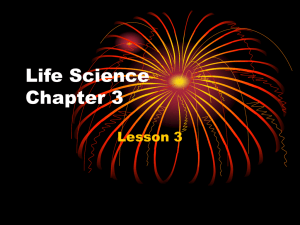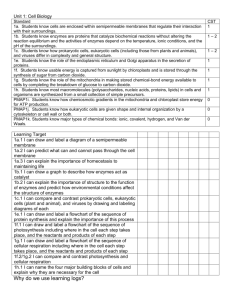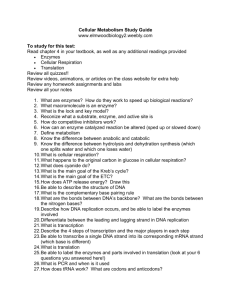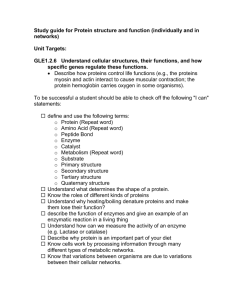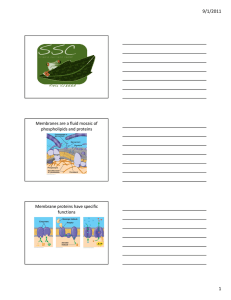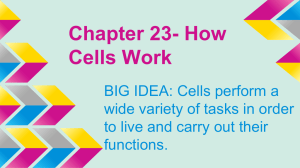REVIEW SHEET FOR EXAM I Introduction,... Chapters 1-3 BIOL&241
advertisement
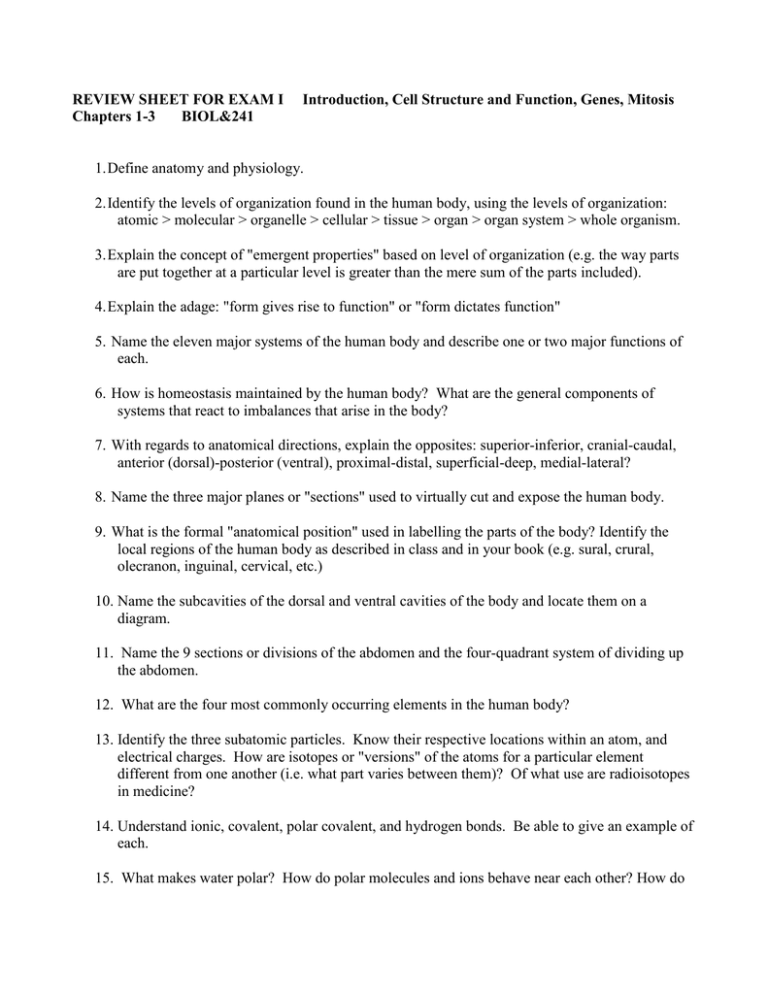
REVIEW SHEET FOR EXAM I Chapters 1-3 BIOL&241 Introduction, Cell Structure and Function, Genes, Mitosis 1. Define anatomy and physiology. 2. Identify the levels of organization found in the human body, using the levels of organization: atomic > molecular > organelle > cellular > tissue > organ > organ system > whole organism. 3. Explain the concept of "emergent properties" based on level of organization (e.g. the way parts are put together at a particular level is greater than the mere sum of the parts included). 4. Explain the adage: "form gives rise to function" or "form dictates function" 5. Name the eleven major systems of the human body and describe one or two major functions of each. 6. How is homeostasis maintained by the human body? What are the general components of systems that react to imbalances that arise in the body? 7. With regards to anatomical directions, explain the opposites: superior-inferior, cranial-caudal, anterior (dorsal)-posterior (ventral), proximal-distal, superficial-deep, medial-lateral? 8. Name the three major planes or "sections" used to virtually cut and expose the human body. 9. What is the formal "anatomical position" used in labelling the parts of the body? Identify the local regions of the human body as described in class and in your book (e.g. sural, crural, olecranon, inguinal, cervical, etc.) 10. Name the subcavities of the dorsal and ventral cavities of the body and locate them on a diagram. 11. Name the 9 sections or divisions of the abdomen and the four-quadrant system of dividing up the abdomen. 12. What are the four most commonly occurring elements in the human body? 13. Identify the three subatomic particles. Know their respective locations within an atom, and electrical charges. How are isotopes or "versions" of the atoms for a particular element different from one another (i.e. what part varies between them)? Of what use are radioisotopes in medicine? 14. Understand ionic, covalent, polar covalent, and hydrogen bonds. Be able to give an example of each. 15. What makes water polar? How do polar molecules and ions behave near each other? How do polar molecules behave near non-polar ones? What does "like dissolves like" refer to? 16. Define solute, solvent, solution. Explain why water is considered a good solvent. 17. Understand the difference between hydrophobic and hydrophilic substances. 18. Name eight specific properties of water. 19. Define an acid and a base. What is pH a measure of? Understand the pH scale, state a typical pH value for a strong acid, a strong base, and a neutral solution. What is a buffer and why is it important in the human body (such as in our blood)? 20. What are three major types of reactions that take place inside of cells? Be sure to understand the role of condensation/dehydration (synthesis) and hydrolysis (break down). 21. Describe the basic structure of biological moelcules (monomers vs. polymers) chemical characteristics and cellular functions of the following organic compounds: carbohydrates, lipids, proteins, and nucleic acids (and ATP). What are the major monomers and polymers in each group? 22. Identify examples of: simple sugars, double sugars, complex carbohydrates (polysaccharides), lipids, proteins, and nucleic acids. State the basic function(s) of each of these classes of molecules/macromolecules. 23. What are the two major subdivisions of metabolism and what does metabolism mean anyway? 24. How are anabolic reactions fueled? What key energy intermediate is produced (and how is that intermediate "charged up")? 25. How is energy absorbed or released in anabolic (buildup) or catabolic (breakdown) reactions? 26. What is activation energy? Which types of metabolic reactions require activation energy (a "trick" question) to move forward 27. Define an enzyme. How are enzymes involved as catalysts? Describe the role of enzymes in metabolism. How are enzymes specific? 28. How are enzymes effected by high or low pH, or low or high temperatures? Be very specific in describing what happens to an enzyme and how that effects the reactions they catalyze. Use the word "denature" appropriately. 29. What's the difference between a competitive inhibitor and a non-competitive inhibitor of enzyme function? Which type of inhibition is used by cells in regulating enzyme activity? What are coenzymes? 30. Write the full equation for cellular respiration. What are the reactants and where do they come from? What are the products, and where do they go? Name the divisions of the cellular respiration process and where they occur in the human cell. 31. What is fermentation and how is it relevant to human physiology? Does it ever occur in humans, and if so, where? What is the "goal" of a cell that ferments? 32. Describe the properties of cell membranes including composition, structure, function, and the fluid mosaic model. Be able to give examples of some of the functions of membrane proteins. What components make a biological membrane "selectively permeable"? 33. Understand membrane transport. Describe the processes of passive transport (simple diffusion, facilitated diffusion, osmosis), active transport, endocytosis (pinocytosis and phagocytosis), and exocytosis. What are the factors that determine if a particle can diffuse through the plasma membrane or not? 34. What is a "concentration gradient" and how is this created or used by the cell? What is an electrochemical gradient? How is it important in cellular respiration? 35. Define and explain the terms: hypotonic, hypertonic, isotonic, hemolysis, and crenation. Explain the importance of these terms with respect to cells. 36. Describe the location, structure, and function of each of the following organelles/structures: nucleus, nucleolus, endoplasmic reticulum (rough and smooth), Golgi apparatus, mitochondria, lysosomes, ribosomes, centrioles, cilia, flagella, and microvilli. Identify the 3 major cytoskeltal fibers. Be able to identify all of the above organelles/structures in a diagram, on a model, or in a micrograph. 37. Describe tight junctions, desmosomes, and gap junctions. 38. Diagram the cell cycle and explain the key events in each phase: G1, S, G2, and M (mitotic) phase. What is the G0 phase? 39. Diagram and state the stages of mitosis and cytokinesis, and describe the events that occur in each stage (PMAT). Be able to recognize (or sketch) a cell in each phase of mitosis. 40. Understand the processes of DNA replication, transcription, and translation including the KEY enzymes required. Understand the chemical compositions of DNA and RNA. Be able to write the sequence of bases in an mRNA if given the template strand of DNA from which it is made in transcription. 41. Describe how proteins are synthesized including the role of mRNA, tRNA, rRNA, amino acids, and the ribosomes. Discuss the nature and the importance of the genetic code and mRNA codons. What is the universal start codon? What amino acid is inserted when this codon is "read" by the ribosome? Be able to use a codon dictionary to write the amino acid sequence of a polypeptide (protein) from an mRNA sequence. 42. Understand the definition of cancer and the mechanisms that can lead to its formation.
